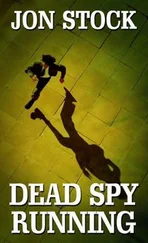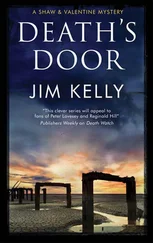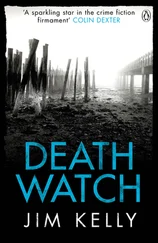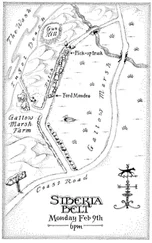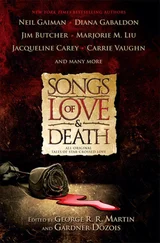Jim Kelly - Death Toll
Здесь есть возможность читать онлайн «Jim Kelly - Death Toll» весь текст электронной книги совершенно бесплатно (целиком полную версию без сокращений). В некоторых случаях можно слушать аудио, скачать через торрент в формате fb2 и присутствует краткое содержание. Жанр: Полицейский детектив, на английском языке. Описание произведения, (предисловие) а так же отзывы посетителей доступны на портале библиотеки ЛибКат.
- Название:Death Toll
- Автор:
- Жанр:
- Год:неизвестен
- ISBN:нет данных
- Рейтинг книги:5 / 5. Голосов: 1
-
Избранное:Добавить в избранное
- Отзывы:
-
Ваша оценка:
- 100
- 1
- 2
- 3
- 4
- 5
Death Toll: краткое содержание, описание и аннотация
Предлагаем к чтению аннотацию, описание, краткое содержание или предисловие (зависит от того, что написал сам автор книги «Death Toll»). Если вы не нашли необходимую информацию о книге — напишите в комментариях, мы постараемся отыскать её.
Death Toll — читать онлайн бесплатно полную книгу (весь текст) целиком
Ниже представлен текст книги, разбитый по страницам. Система сохранения места последней прочитанной страницы, позволяет с удобством читать онлайн бесплатно книгу «Death Toll», без необходимости каждый раз заново искать на чём Вы остановились. Поставьте закладку, и сможете в любой момент перейти на страницу, на которой закончили чтение.
Интервал:
Закладка:
Shaw stretched out his legs, crossed them at the ankles and took a breath.
‘You know the basics of the case, sir. But for the record …’
The case. The one crime that bound Shaw’s life to that of George Valentine, like a sailor lashed to a raft. The case of nine-year-old Jonathan Tessier. His father’s last case.
The bare facts were undisputed. Jonathan Tessier, aged nine, had been found dead at three minutes past midnight on the night of 26 July 1997. He was still dressed in the sports kit he’d put on the previous morning to play football on the grass triangle by the flats in which he lived on the Westmead Estate in Lynn’s North End. He’d been strangled with a ligature of some sort, the condition of the body pointing to a time of death between one and seven hours earlier, between 6.00 and 11.00 p.m. on the 25th. DCI Jack Shaw had attended the scene, with the then Detective Inspector George Valentine. They were St James’s senior investigative team, with a record going back nearly a decade including a string of high-profile convictions — notably a clutch of four gang murders on the docks in the summer of 1989 and a double child murder in 1994.
On that night in 1997 they quickly ascertained the facts of the case so far: the boy’s body had been found in the underground car park beneath Vancouver House — a twenty-one-storey block at the heart of the Westmead Estate — by a nurse, parking after her late shift at the local hospital. She said she’d seen a car drive off quickly — a Volkswagen Polo, she thought — when she’d got out of her Mini. The fleeing driver had failed to negotiate the narrow ramp to ground level and clipped one of the concrete pillars, spilling broken glass from a headlamp on to the ground.
DI Valentine had radioed an alert on the damaged car to all units. A uniformed PC on foot patrol in the North End found a Polo abandoned on the edge of allotments at just after two that morning, its offside headlamp shattered, the engine warm. A police computer check identified the owner as Robert James Mosse, a law student aged twenty-one who, like the victim, was a resident of Vancouver House. He was studying at Sheffield, but home for the summer vacation. Back at the scene the body had been removed, revealing a single glove below the corpse: black leather with a fake fur lining. Jack Shaw and George Valentine had gone to the first-floor flat Mosse shared with his mother to interview him.
Here the accounts of the night diverge. Jack Shaw and George Valentine’s statements dovetailed: they maintained that they showed Mosse the glove in a cellophane evidence bag before obtaining permission to search the flat. They conducted the search and failed to find the matching glove. Mosse, in contrast, agreed in evidence they had shown him the glove, but only after the search. He also maintained that the glove had not been contained in a bag of any nature, but simply handed to him. His mother corroborated her son’s version of events, adding that at one point DI Valentine had reversed the fingers of the glove, turning it inside out to display the fur lining inside. Both she and her son denied ownership of the glove. The other glove was never found.
Mosse said his car had been stolen that evening, a crime he himself had reported earlier, as verified by the duty desk at St James’s. He had been at the cinema alone. His mother had accompanied him to the same complex but they had opted for different films: she went to see LA Confidential on the small screen while her son had watched The Full Monty on the main screen. Mosse had produced a half-torn cinema ticket as evidence. His film had finished first and so he had walked back to the flats. His car had been parked outside on the street because there’d been a spate of vandalism in the underground car park and he’d been worried about the Polo, which was second hand but in good condition. He’d found the car gone and phoned the police from the flat.
Overnight the smashed glass at the scene was matched to pieces found still clinging to the rim of the headlamp of the abandoned car — Mosse’s car. Three pieces were later found to be exact matches — as good as fingerprints in terms of material evidence. Staff at the cinema were unable to recall Mosse in the audience that evening, despite the fact that the auditorium had been only a quarter full. The cinema ticket did not specify the screen, and Mosse’s mother said she had thrown away her own ticket stub. Mosse was charged with the murder of Jonathan Tessier at three thirty on the afternoon of the 26th. Bail was denied at a hearing the following day. Analysis of skin residue found in the glove was ordered through the Forensic Science Service, an agency of the Home Office. The report estimated that there was a chance of only one in three billion that the residue came from anyone other than Mosse.
The trial began in October. The case was thrown out of Cambridge Crown Court at the first recess on the first day. The judge agreed with the defence’s claim that Jack Shaw and George Valentine had made a basic error in taking forensic evidence from the scene to the suspect’s flat, and then compounded that error by exposing the forensic evidence to potential contamination. In dismissing the charges he went further, suggesting that, given the apparently flagrant disregard for police procedure shown by the detectives involved, he was unable to ignore the possibility that they had deliberately falsified the evidence. While the defence accepted that the glove had been found at the scene — a forensic officer confirmed the item was under the body — it was possible they’d taken it to Mosse’s flat to expose it to dust and skin residue. The shadow was cast, and would always be there.
‘And that’s where this case should have rested,’ said Warren, cracking his fingers and wincing as the force helicopter swung over the building towards the St James’s rooftop helipad. But the case hadn’t rested there, and Warren knew that as well as they did.
Following a decade of exile in north Norfolk, the demoted George Valentine had been reassigned to the serious crime unit at St James’s two years ago. It was his last chance to regain the rank he’d lost. His superior officer was DI Peter Shaw — the son of his former disgraced partner. Between them, sometimes acting in concert, sometimes alone, they had tried to build again the case against Robert ‘Bobby’ Mosse. Three months ago they’d made a major breakthrough in the case and Warren had reluctantly given them clearance to push on — to try one last time to get Robert Mosse back in the dock. It was a decision that still rankled, because he was as aware as they were that he’d had little choice.
Shaw stood and walked to Max Warren’s window, then he turned to face his superior officer, effortlessly in control.
‘As you know, we made some progress last year. Since then we have been waiting for one last development to fall into place before coming back to you. We now believe we understand the motive behind this crime. I’d like to get you up to speed now, sir, briefly.’
Warren glared at them. ‘Just get on with it.’ A bead of sweat appeared on his forehead, catching the light.
‘The key, sir, to what really happened on the night Jonathan Tessier died lies in a road-traffic accident a few days earlier, just after midnight, on the edge of Castle Rising. The spot is a lonely T-junction. A speeding Mini shot out across the intersection and hit a Ford Mondeo. There is CCTV footage of the accident, although it’s very poor quality. There were kids in the Mini. They got out and examined the wreck of the other car, then they drove off. A motorist came upon the scene thirty-five minutes later and called an ambulance. Both passengers, two OAPs, were dead. The driver was seriously injured. There is evidence on the CCTV that at least one of the passengers was alive when the joyriders left the scene.’
Читать дальшеИнтервал:
Закладка:
Похожие книги на «Death Toll»
Представляем Вашему вниманию похожие книги на «Death Toll» списком для выбора. Мы отобрали схожую по названию и смыслу литературу в надежде предоставить читателям больше вариантов отыскать новые, интересные, ещё непрочитанные произведения.
Обсуждение, отзывы о книге «Death Toll» и просто собственные мнения читателей. Оставьте ваши комментарии, напишите, что Вы думаете о произведении, его смысле или главных героях. Укажите что конкретно понравилось, а что нет, и почему Вы так считаете.



